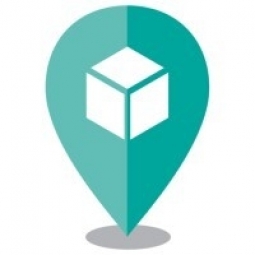Technology Category
- Analytics & Modeling - Real Time Analytics
- Cybersecurity & Privacy - Identity & Authentication Management
Applicable Industries
- Retail
- Transportation
Applicable Functions
- Logistics & Transportation
- Procurement
Use Cases
- Last Mile Delivery
- Time Sensitive Networking
Services
- System Integration
About The Customer
Musgrave is Ireland's leading food retail, wholesale, and food service company. With a 146-year heritage in food and brand innovation, Musgrave is one of Europe's most successful family-owned businesses. The company feeds one in three people in Ireland through its 11 market-leading food and beverage brands, including SuperValu, Centra, Frank and Honest, and Musgrave MarketPlace. These brands are developed in collaboration with local entrepreneurs based in the communities they serve. The case study focuses on the grocery home delivery service offered by 10 of their SuperValu stores in Dublin, Limerick, Waterford, and Kilkenny.
The Challenge
Musgrave, a leading food retail, wholesale, and food service company in Ireland, faced challenges in managing its grocery home delivery service across its 10 SuperValu stores. The company was using routing software in four of its larger stores, but it lacked essential features like a driver app, leaving them without a direct link to their drivers. In the remaining six stores, the delivery planning was done manually using a 'Daily Delivery List'. Drivers would scan the list, discuss the routes among themselves, and then decide which orders to take based on their local knowledge. This process was time-consuming and lacked efficiency. Furthermore, drivers would sometimes contact customers to check if they could deliver their orders earlier to group nearby orders together. Musgrave aimed to improve the delivery experience for their customers, gain more control and visibility over their delivery operations, reduce the time spent on manual route planning, and ensure deliveries were completed within the chosen delivery windows.
The Solution
Musgrave implemented SmartRoutes, a route planning software, to streamline its delivery operations. The software automatically plans and assigns routes to drivers based on customers' chosen time windows, location, and delivery vehicle capacity. This implementation significantly reduced the administrative overhead of planning routes and increased the efficiency and productivity of the delivery process. The software also includes a Drivers Mobile App, which sends routes directly to the drivers, allowing them to start their day immediately without spending time organizing their routes. SmartRoutes also introduced customer notifications, providing customers with an SMS containing a live tracking link when their driver is 30 minutes away. This feature significantly reduced customer wait time and almost eradicated queries coming through the help desk. The software also includes a live tracking dashboard, allowing management to monitor driver progress, identify delays, and make informed decisions in real-time. The drivers can also update incorrect Eircodes and other customer information in the system, streamlining the delivery process and improving customer service.
Operational Impact
Quantitative Benefit

Case Study missing?
Start adding your own!
Register with your work email and create a new case study profile for your business.
Related Case Studies.

Case Study
Airport SCADA Systems Improve Service Levels
Modern airports are one of the busiest environments on Earth and rely on process automation equipment to ensure service operators achieve their KPIs. Increasingly airport SCADA systems are being used to control all aspects of the operation and associated facilities. This is because unplanned system downtime can cost dearly, both in terms of reduced revenues and the associated loss of customer satisfaction due to inevitable travel inconvenience and disruption.

Case Study
IoT-based Fleet Intelligence Innovation
Speed to market is precious for DRVR, a rapidly growing start-up company. With a business model dependent on reliable mobile data, managers were spending their lives trying to negotiate data roaming deals with mobile network operators in different countries. And, even then, service quality was a constant concern.

Case Study
Digitize Railway with Deutsche Bahn
To reduce maintenance costs and delay-causing failures for Deutsche Bahn. They need manual measurements by a position measurement system based on custom-made MEMS sensor clusters, which allow autonomous and continuous monitoring with wireless data transmission and long battery. They were looking for data pre-processing solution in the sensor and machine learning algorithms in the cloud so as to detect critical wear.

Case Study
Cold Chain Transportation and Refrigerated Fleet Management System
1) Create a digital connected transportation solution to retrofit cold chain trailers with real-time tracking and controls. 2) Prevent multi-million dollar losses due to theft or spoilage. 3) Deliver a digital chain-of-custody solution for door to door load monitoring and security. 4) Provide a trusted multi-fleet solution in a single application with granular data and access controls.

Case Study
Improving Production Line Efficiency with Ethernet Micro RTU Controller
Moxa was asked to provide a connectivity solution for one of the world's leading cosmetics companies. This multinational corporation, with retail presence in 130 countries, 23 global braches, and over 66,000 employees, sought to improve the efficiency of their production process by migrating from manual monitoring to an automatic productivity monitoring system. The production line was being monitored by ABB Real-TPI, a factory information system that offers data collection and analysis to improve plant efficiency. Due to software limitations, the customer needed an OPC server and a corresponding I/O solution to collect data from additional sensor devices for the Real-TPI system. The goal is to enable the factory information system to more thoroughly collect data from every corner of the production line. This will improve its ability to measure Overall Equipment Effectiveness (OEE) and translate into increased production efficiencies. System Requirements • Instant status updates while still consuming minimal bandwidth to relieve strain on limited factory networks • Interoperable with ABB Real-TPI • Small form factor appropriate for deployment where space is scarce • Remote software management and configuration to simplify operations








